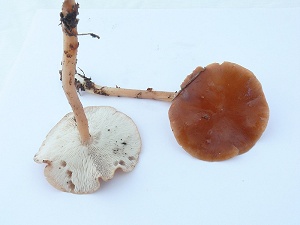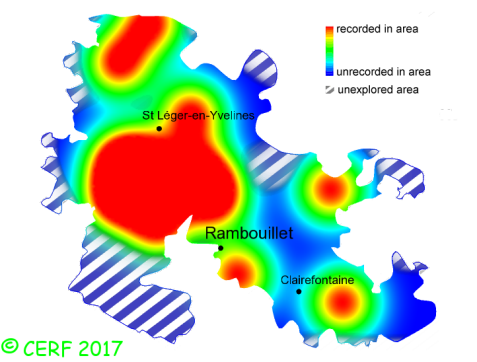| Rhodocollybia distorta (Fr.) Singer |
|
|
|
|
|
|
The cap is red-brown, with a central umbo; its margin is smooth. The cap surface is smooth, not viscid nor sticky. The stem is whitish, stained with brown, without ring. The flesh is white, unchanging; its texture is fibrous. The gills are whitish then stained with orange, adnate, crowded . The spore print is white. This species is saprophytic. It grows on the ground, in tufts or isolated, in coniferous woods. The fruiting period takes place from July to November.
Chemical tests : gills become orange-red in 5 minutes when in contact with iron sulphate. Distinctive features : Red-brown cap; stem furrowed and twisted on all its length; white gills, crowded, spotted with red-brown stains with age; with conifers Rhodocollybia distorta is quite rare and scattered in the forest of Rambouillet, and is occasional, more generally speaking . | ||
|
page updated on 14/01/18

